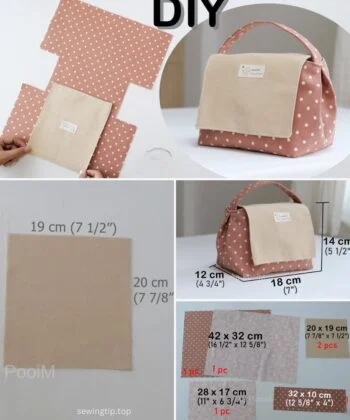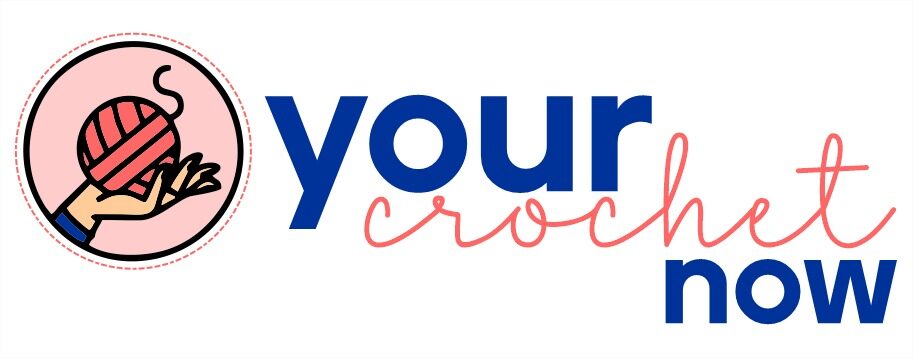Sewing your own bag is more than just a practical project—it is an opportunity to express your style while building useful skills. A two-tone flap bag is the perfect blend of functionality and creativity. By using two coordinating fabrics, you can create contrast and add personality to your bag, making it truly unique.
For beginners, this project is a wonderful introduction to basic sewing techniques and working with quilt fabric. Since the pattern includes a structured flap, it allows you to experiment with a design that feels both modern and timeless. Using a quilt pattern can also help beginners practice precision while cutting and sewing.
This tutorial will guide you step by step, ensuring that even if you are new to sewing, you can finish with a beautiful bag you’ll be proud to use. With clear instructions, a complete material list, and customization ideas, this project will help you feel confident with both fabric and sewing machine.
Materials You Will Need
Before starting, make sure you have everything ready. Having all your supplies nearby will make the process smooth and enjoyable. You will need:
- Two coordinating quilt cotton fabrics (one for the body and one for the flap).
- Fusible interfacing for structure.
- Lining fabric of your choice.
- A magnetic snap or button for closure.
- Matching thread and basic sewing tools (scissors, pins, rotary cutter).
- Sewing machine with straight stitch capability.
Using quilt fabrics is ideal because they come in endless colors, prints, and textures. You can follow a quilt pattern to mix solids with prints, making your bag more eye-catching. Interfacing will give your bag shape and strength, while the lining adds durability and a neat finish.
Preparing your materials is just as important as sewing. Before cutting, iron your fabrics to avoid wrinkles that may distort the quilt pattern. Once all materials are ready, the actual sewing will feel smooth and stress-free.
Cutting the Fabrics
The cutting stage is crucial for accuracy. Begin by cutting two pieces from your main body fabric, each measuring 12 x 14 inches. Then, cut one piece from the contrasting fabric for the flap, measuring 10 x 12 inches. For the lining, cut two pieces the same size as the body, plus one extra piece for the flap.

If you are following a quilt pattern, you may choose to cut your fabrics into smaller squares or strips and sew them together before cutting into the required sizes. This adds a quilt-like texture to your bag and makes it unique. A scrappy quilt design can make your flap stand out beautifully.
Finally, cut interfacing pieces to match the body and flap pieces. Apply the interfacing to the wrong side of the fabrics according to the manufacturer’s instructions. This step ensures your bag has structure and doesn’t collapse when in use.
Sewing the Bag Body
Place the two body fabric pieces right sides together and pin around the sides and bottom. Sew with a ½-inch seam allowance, leaving the top open. Once sewn, press the seams open for a neat finish.
To give the bag depth, create boxed corners. Measure 2 inches from each bottom corner, mark a square, then pinch and sew across the diagonal line. Trim off the extra fabric. This small step transforms a flat bag into one with professional structure.
Next, repeat the same process with the lining fabric, but leave a 3-inch gap in the bottom seam for turning later. This gap will allow you to flip the bag inside out at the end.
Making the Flap
Take the flap fabric and lining piece, place them right sides together, and sew around three sides, leaving the top open. Trim corners to reduce bulk, then turn right side out. Press carefully to get crisp edges.
If you used a quilt pattern for your flap, this is the moment when your creativity shines. The contrast between your quilted flap and the body fabric adds charm and personality. You can also quilt simple straight lines across the flap to highlight the design and give it extra durability.
Topstitch around the finished edges of the flap for a polished look. This step not only strengthens the seams but also gives your bag a professional finish.
Attaching the Flap
Pin the flap to the back of the outer bag, aligning the raw edges at the top. Make sure the flap is centered before sewing. Baste the flap in place with a ¼-inch seam allowance.
Now, place the outer bag inside the lining, right sides together, ensuring the flap is tucked inside. Match the side seams and pin around the top edge. Sew completely around the top opening with a ½-inch seam allowance.
Pull the outer bag through the gap left in the lining. Once turned right side out, push the lining into the bag and press the top seam. Finish with a neat topstitch around the edge for reinforcement.
Adding the Closure
A closure is essential for keeping your belongings safe. The simplest option is a magnetic snap. To install it, measure the center of the flap and mark the spot. Attach one part of the snap to the flap and the other to the front body panel.
If you prefer a more rustic look, a button and fabric loop can be used instead. This option requires minimal tools and adds a handmade charm to the bag. You could even recycle a button from an old quilt project for a personal touch.
Whichever closure you choose, make sure it aligns well when the flap is folded over. Testing before final stitching ensures the bag closes smoothly and looks symmetrical.
Personalization Ideas
One of the joys of sewing is making each project your own. To personalize your flap bag, consider using a quilt pattern made from colorful fabric scraps. This not only looks stunning but also reduces fabric waste.
You could also add embroidery, appliqué, or even fabric paint to the flap for an artistic flair. Simple geometric stitching can mimic quilting, giving your bag a handcrafted and unique feel. Adding a small patch pocket on the inside is another practical customization.
Handles and straps offer further personalization. You can make a short hand strap from the same quilt fabric or attach metal rings for a detachable long strap. This flexibility makes your bag suitable for casual outings or special occasions.
Sharing Your Creation
Now that your two-tone flap bag is complete, it’s time to enjoy it. Carry it with pride knowing that you made something both stylish and functional. Handmade bags are conversation starters, and your unique quilt-inspired design will stand out anywhere.
Sharing your project can also inspire others. Post photos on social media, join quilting or sewing groups, or gift a handmade bag to a friend. The quilting community is full of encouragement, and your bag could inspire someone else to try a quilt pattern.
Finally, don’t stop at one bag. Experiment with different fabrics, patterns, and closures. Each bag you make will teach you new techniques and boost your sewing confidence. Your journey into quilting and bag-making is just beginning.
Conclusion
Sewing your own two-tone flap bag is a fulfilling project that combines creativity with practicality. By following this tutorial, you learned how to cut, sew, and personalize a bag that reflects your style. Using quilt fabrics and quilt patterns makes the design more vibrant and engaging.
This project is perfect for beginners but also enjoyable for experienced sewists. With just a few materials, you can create something functional and stylish while practicing essential sewing skills. Every stitch brings you closer to mastering both quilting and bag-making.
We’d love to see your creations! Share your finished bag online, tag your favorite sewing communities, and spread the inspiration. Your handmade two-tone flap bag is more than just an accessory—it’s a story of creativity, patience, and joy.
